Hooked Buttercup (Ranunculus recurvatus var. recurvatus*) of the Buttercup (Ranunculaceae) family, one of 17 yellow-flowered (sometimes white) buttercups in Arkansas, has achenes (fruits) with prominently hooked beaks. The genus name is based on Latin words “rana” meaning frog and “unculus” meaning little and relates to the occurrence of many buttercups in moist habitats. The specific epithet is a reference to the hooked beaks on the fruits’ achenes and a source of its common name. It occurs throughout much of the eastern U.S., east of line from eastern Texas to Minnesota, excluding most of Florida and southern Georgia. In Arkansas is occurs statewide. Preferred habitats consist of shaded to lightly sunny sites with wet to mesic, fertile soils in elevated and low-lying woodlands and shady seeps. It is also known as Small-Flower Buttercup and Hooked Crowfoot.
This herbaceous perennial develops a thickened, white, central rootstock supported by white, spreading, ropy roots. It has basal leaves on long stalks (petioles) and well-spaced, mostly petiolate leaves on flowering stems (cauline leaves) that may grow to 24 inches tall. Basal leaves of young plants are round with slightly notched margins. Leaves of flowering plants, both basal and lower-cauline, are palmate (hand-shaped). Exterior margins of palmate leaves have prominent teeth which may be dentate (pointed) to crenulated (rounded). In broad-outline, palmate leaves (¾ – 3 inches long and 1- 4½ inches wide) have deep incisions (not cutting to the petiole) so that blades are 3 lobed with a shallowly to deeply cordate (heart-shaped) base. Less complex palmate leaves have a broad terminal lobe and an opposite pair of broad lateral lobes. Lateral lobes of more complex palmate basal leaves have an additional less-deep incision, so that leaves may appear to have 5 lobes. Margins of incisions are straight and lack teeth. Terminal lobes, with both side-margins formed by incisions, are cuneate (wedge-shaped) while lateral lobes, with only an interior-margin formed by an incision, are also rather cuneate but with the exterior-margin bearing teeth. Basal and lower cauline leaves have slender, terete petioles with shallow grooves along the adaxial side. Purplish petiole bases of basal leaves have short sheathes. Marginal teeth and crenulations are mucronate (terminating with a tiny, abrupt tip). Upper leaf surface is medium to dark green while lower leaf surface is lighter green. Minute fine pubescence across adaxial (upper) leaf surface is appressed. Fine pubescence of abaxial (lower) surface (primarily along veins and nearer the petiole) and margins (ciliate pubescence) is slightly longer and spreading (erect). Pubescence coarsens and decreases with age.
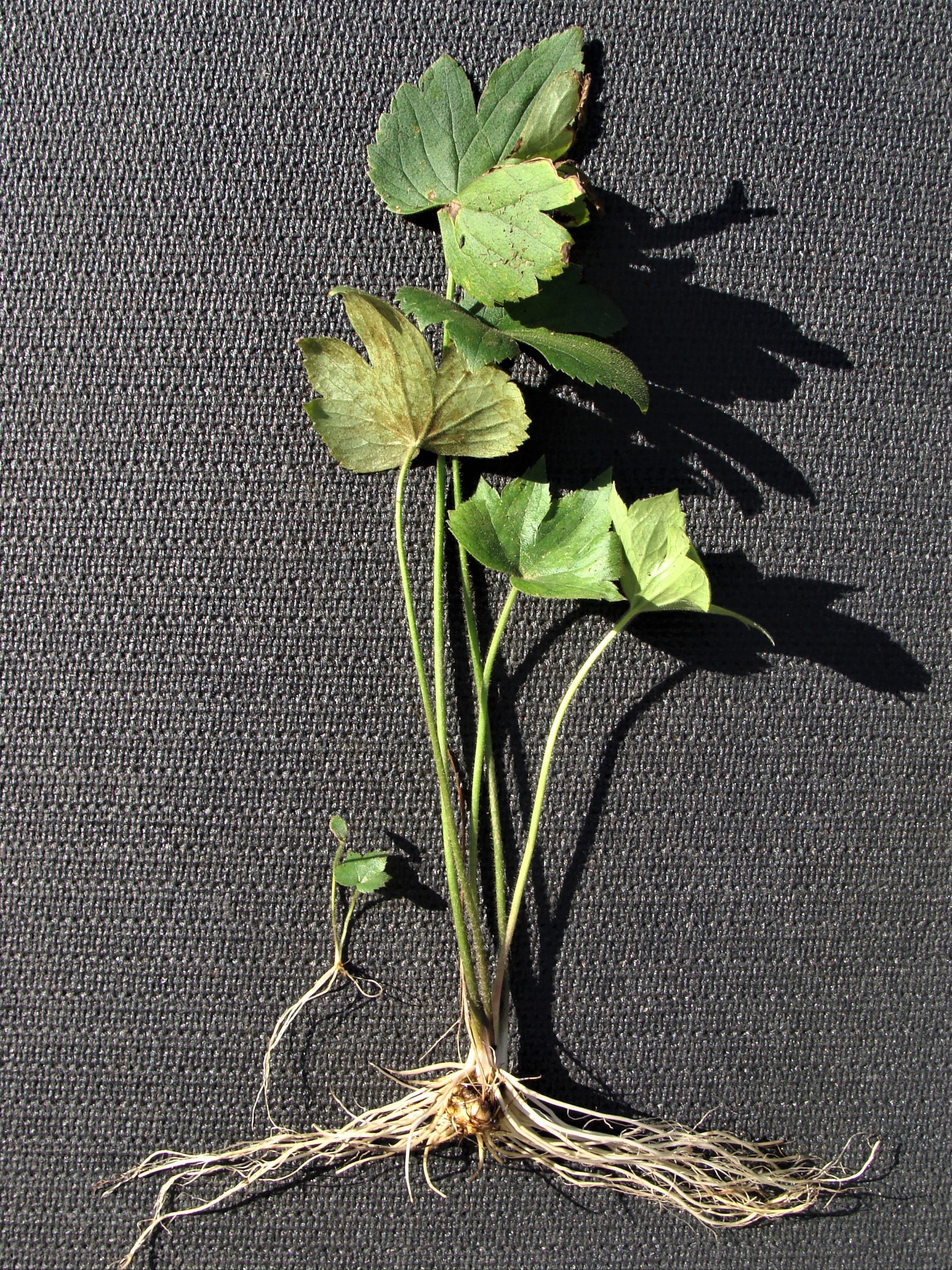


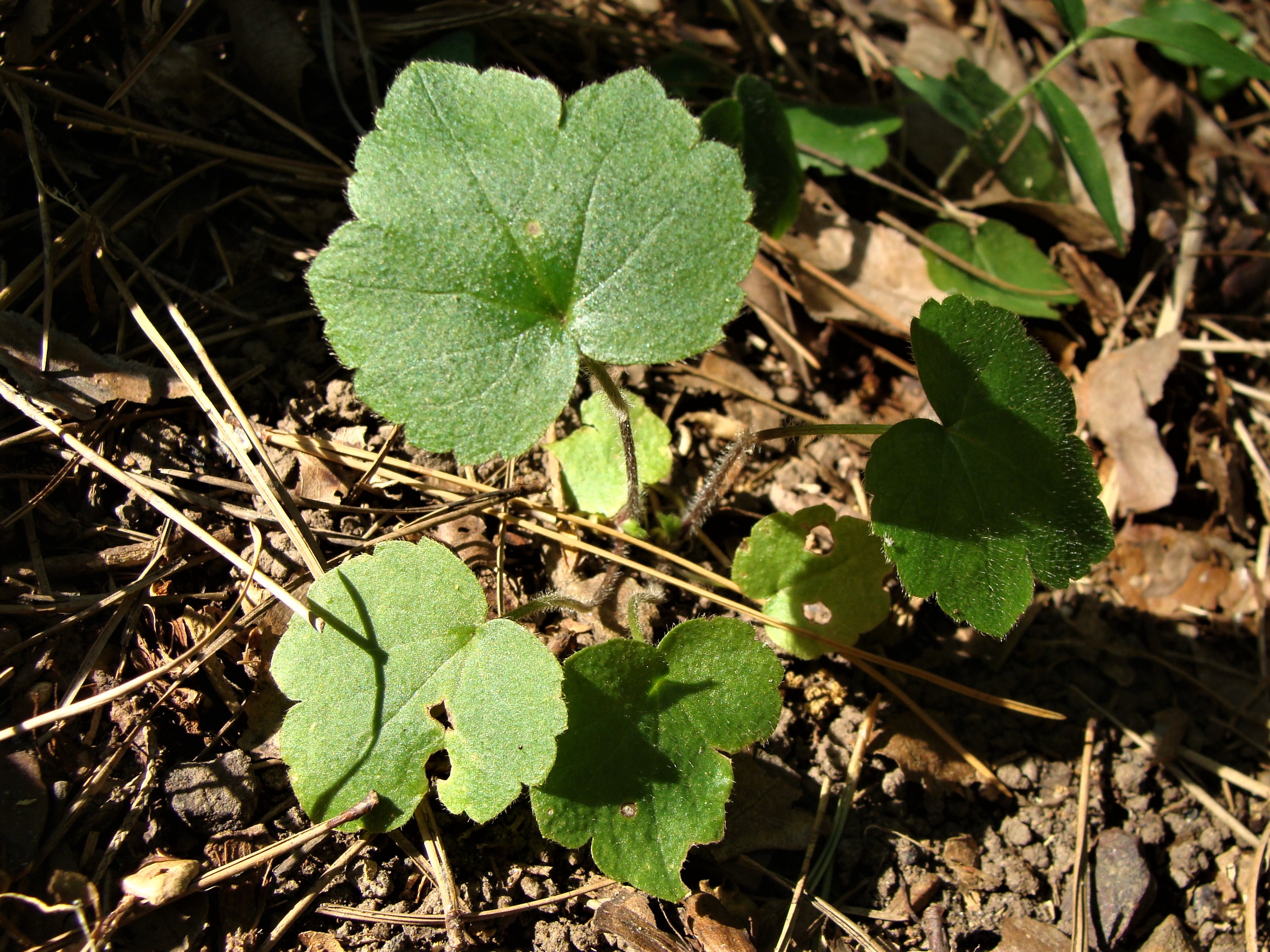
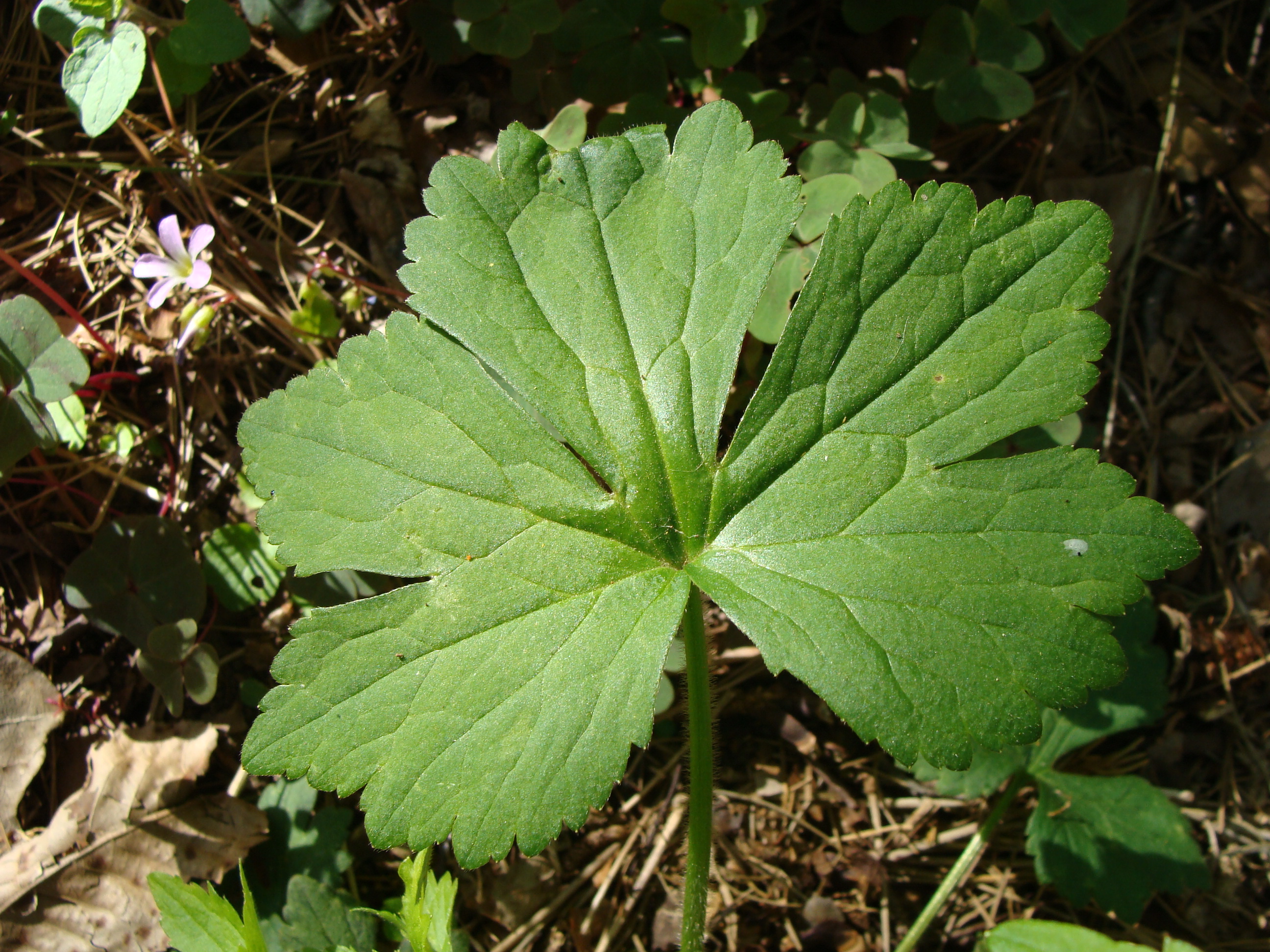
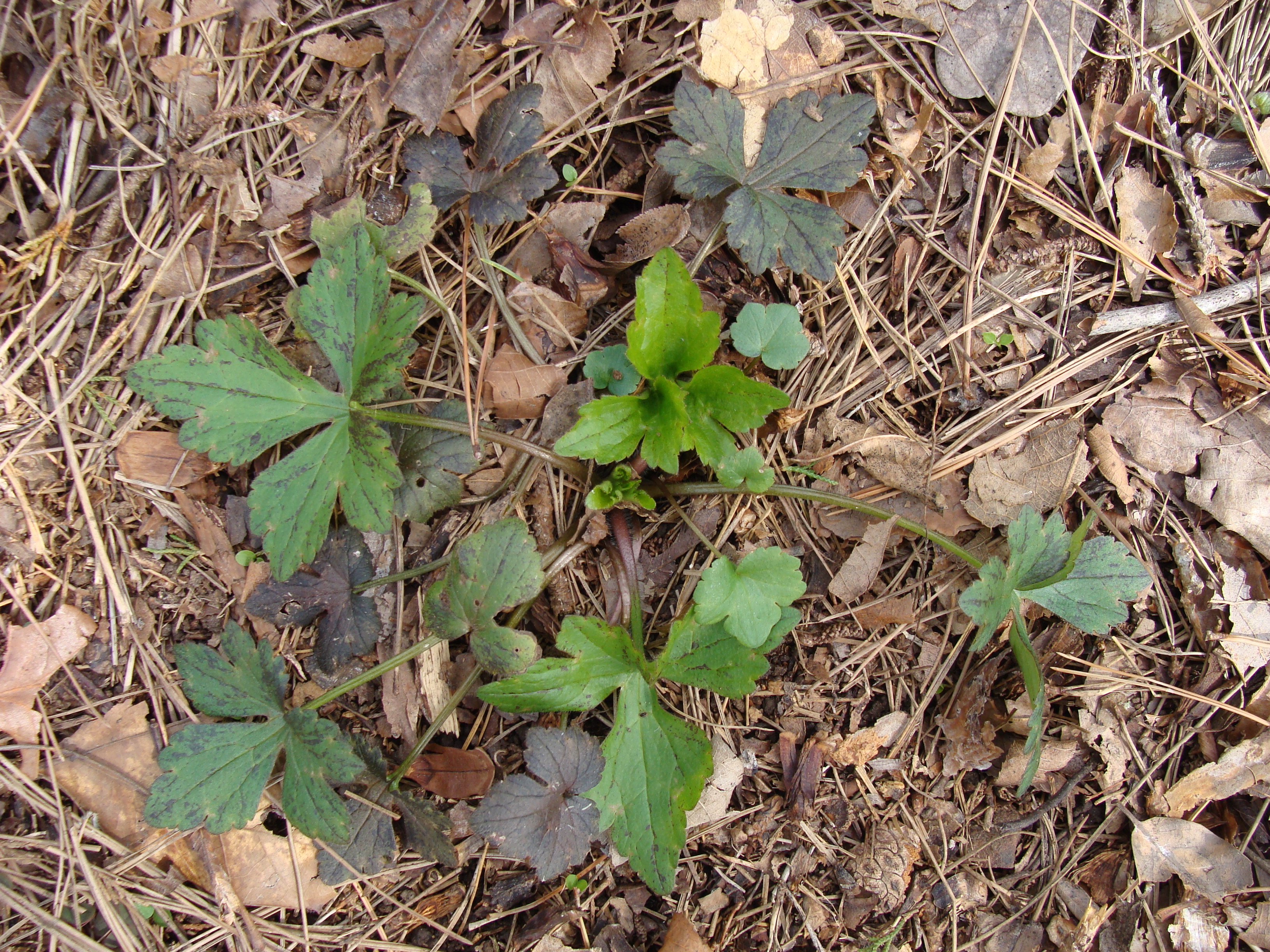
Cauline leaves vary greatly in shape and size. Large 3-lobed lower-cauline leaves, similar to 3-lobed basal leaves, become less complex up-stem with lobes decreasing in number and becoming narrower. The more distal leaves reduce in size and complexity to the point that uppermost leaves become oblong to lanceolate with smooth margins. Petioles of lower-cauline leaves are about same length as basal leaves, with lengths decreasing distally to the point that more-distal, more simple leaves are sessile. Venation pattern, recessed above and expressed below, varies with leaf and lobe shape in that broader lobes have palmate veins while narrow lobes and elongate leaves have veins that appear almost parallel.

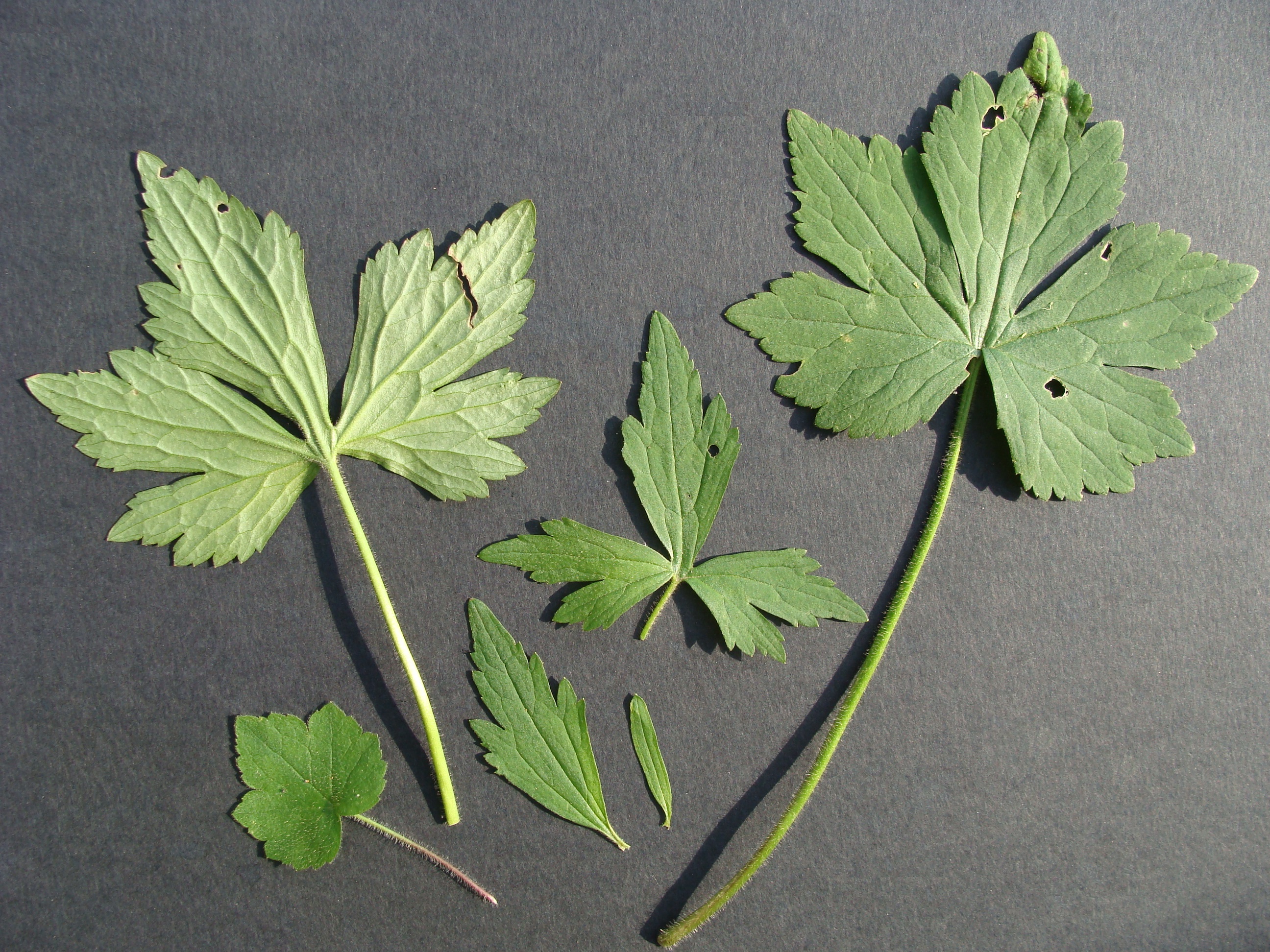
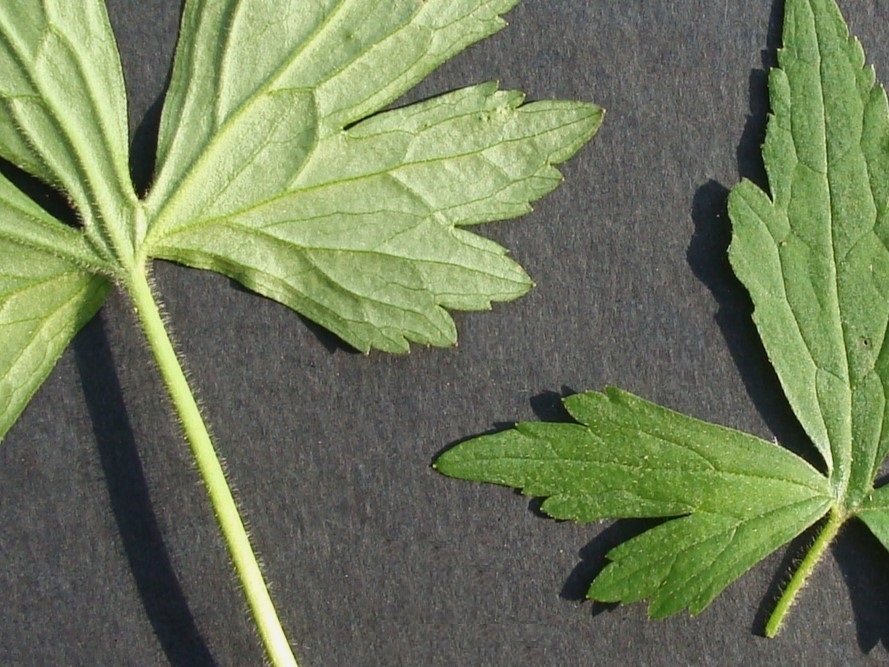
Stems become apparent when first flowers open just above unfurling cauline leaves. Mature plants have one to a half-dozen stems that grow separately from the central rootstock. As stems elongate, cauline leaves become widely spaced with the lowermost leaf being well above the soil. Overall, leaves are usually alternate, but leaves can be in pairs. Upper leaves subtend a single axillary branch. Branches, with their own leaves and axillary buds, may further divide into branches of decreasing size. Branches terminate with a single flower on a peduncle (flower stalk) to 1+ inch long. Stems and branches are moderately to densely covered with spreading, straight white hairs, decreasing distally to the short, antrorse (bent forward) pubescence on the peduncles. Stems remain erect, but with several stems with dividing branches, plants may spread wide from plant-center and develop a congested appearance. Stems and branches are the same medium to dark green of upper leaf surfaces. Stems do not root at nodes.
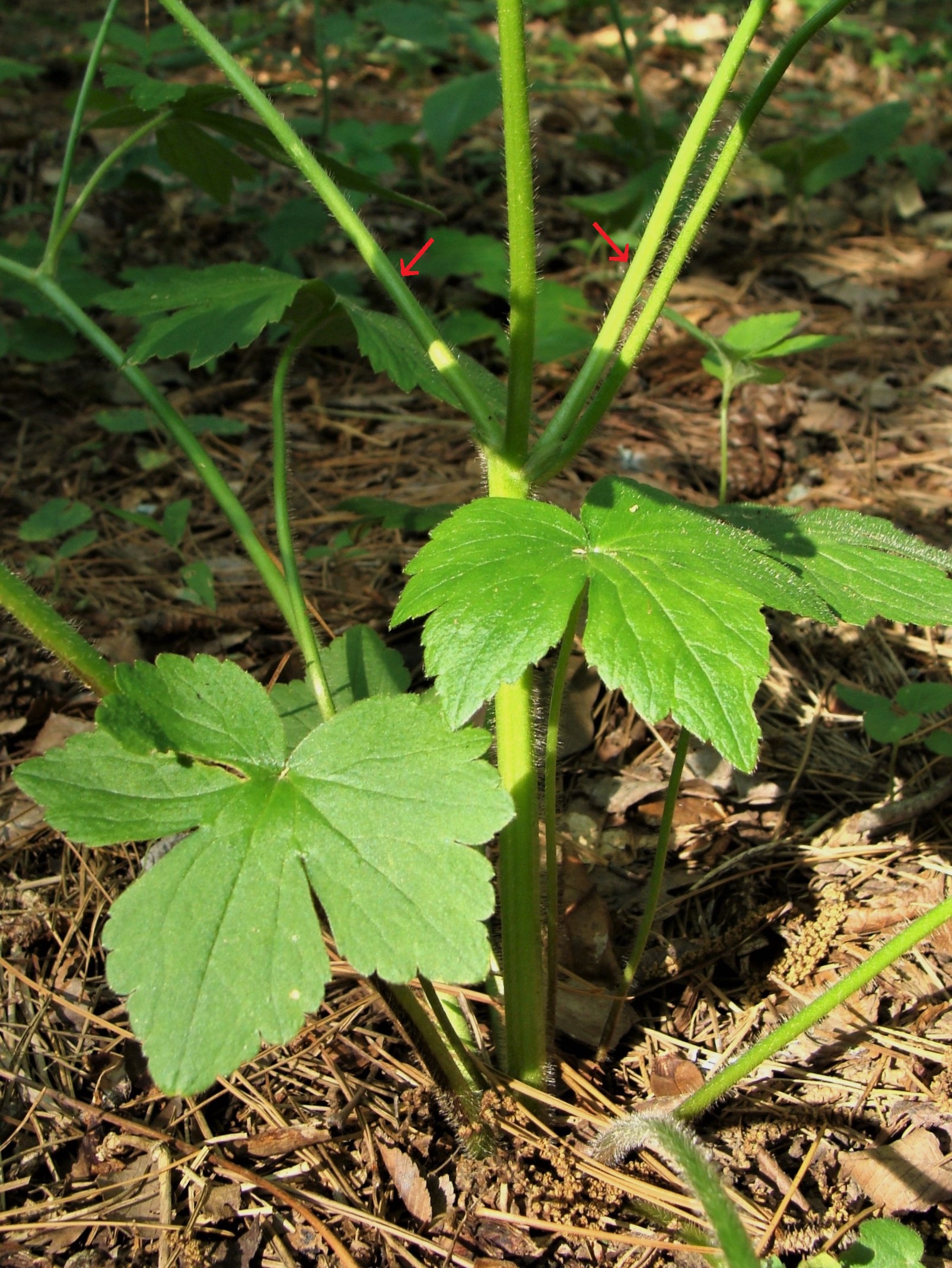
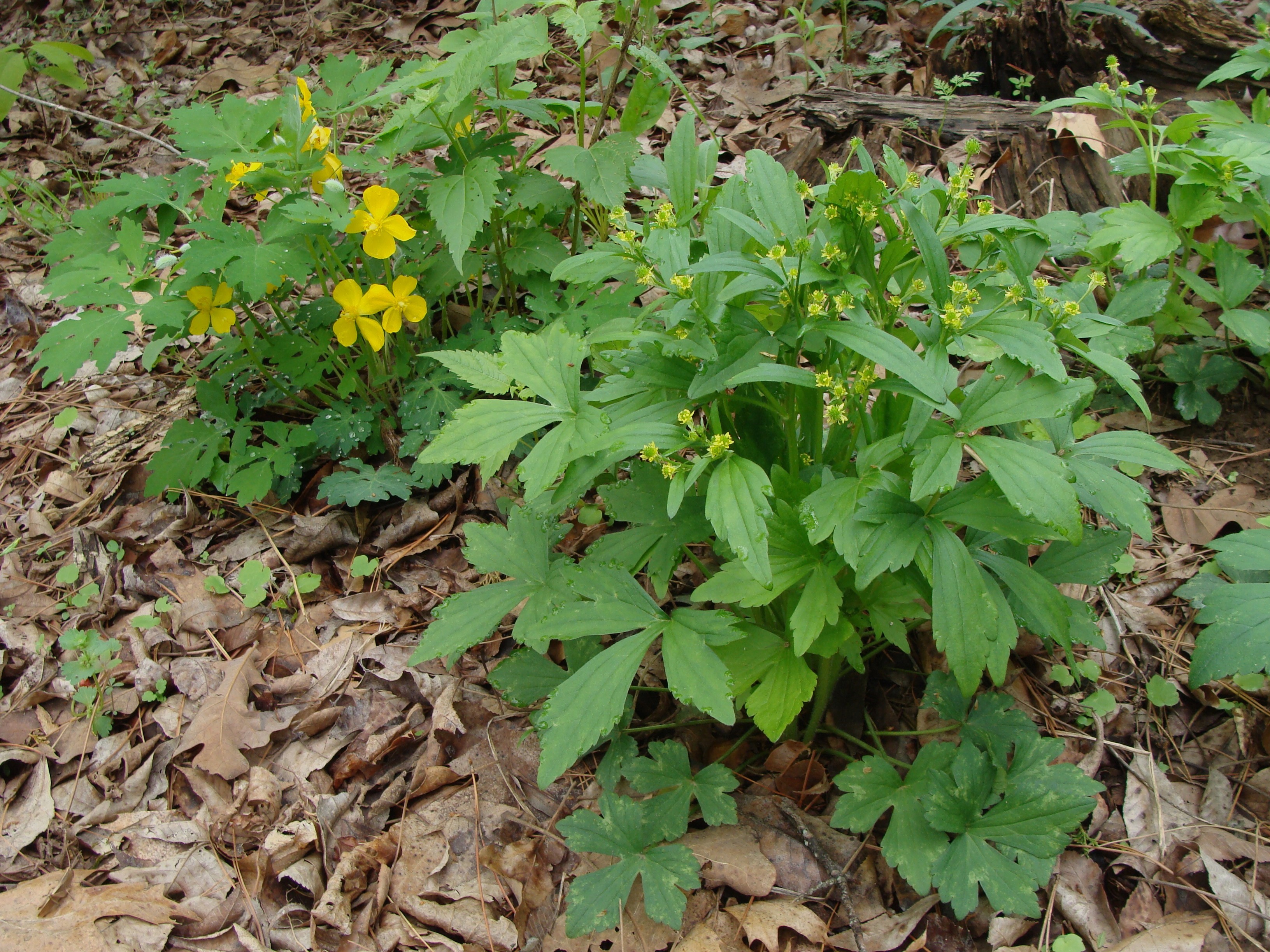
Flowering occurs for about 30 days, primarily during April. Flower buds are round to elongate in side-profile and, in top-view cross-section, are round with 5 bulges formed by sepals. Overall structure of the inflorescence is a panicle with cymose branches terminating with single flowers. The perfect flowers (with stamens and pistils) reach anthesis sequentially from early to later branches. The small flowers, ⅓ inch across, have 5 pale-yellow petals, a ring of 30± stamens (filaments + anthers) and 5 pale-green sepals (¼-inch long). The lanceolate to oblong-oblanceolate petals, <¼ inch long and 1/10 inch wide, are half the length and significantly narrower than sepals. The widely spaced petals are ascending to spreading in a star-pattern with the sepals in-between. Stamens, in a single or double series, surround the receptacle bearing a dense cluster of bright-green pistils (ovary + style + stigma). The flattened, ovoid, asymmetrical pistils are arranged radially with a hooked style, tipped with a pinpoint stigma, directed away from flower center and downward. Stamens, with 2-lobed pale-yellow anthers facing upward and outward, recurve toward flower-center. Anthers, after releasing pale-yellow pollen, thin as the stamens elongate to become tongue-like before dropping off.
Sepals, stubby when flowers are in bud, continue to grow as flowers open. At anthesis, the elongate-triangular sepals are sharply reflexed to drooping from near their bases. Interior side of sepals is whitish and smooth while exterior is pale green with especially long, weak, fine, straight hairs. Sepals, along with petals and stamens, quickly drop off the receptacle as anthesis progresses. Development of the infructescence proceeds quickly.

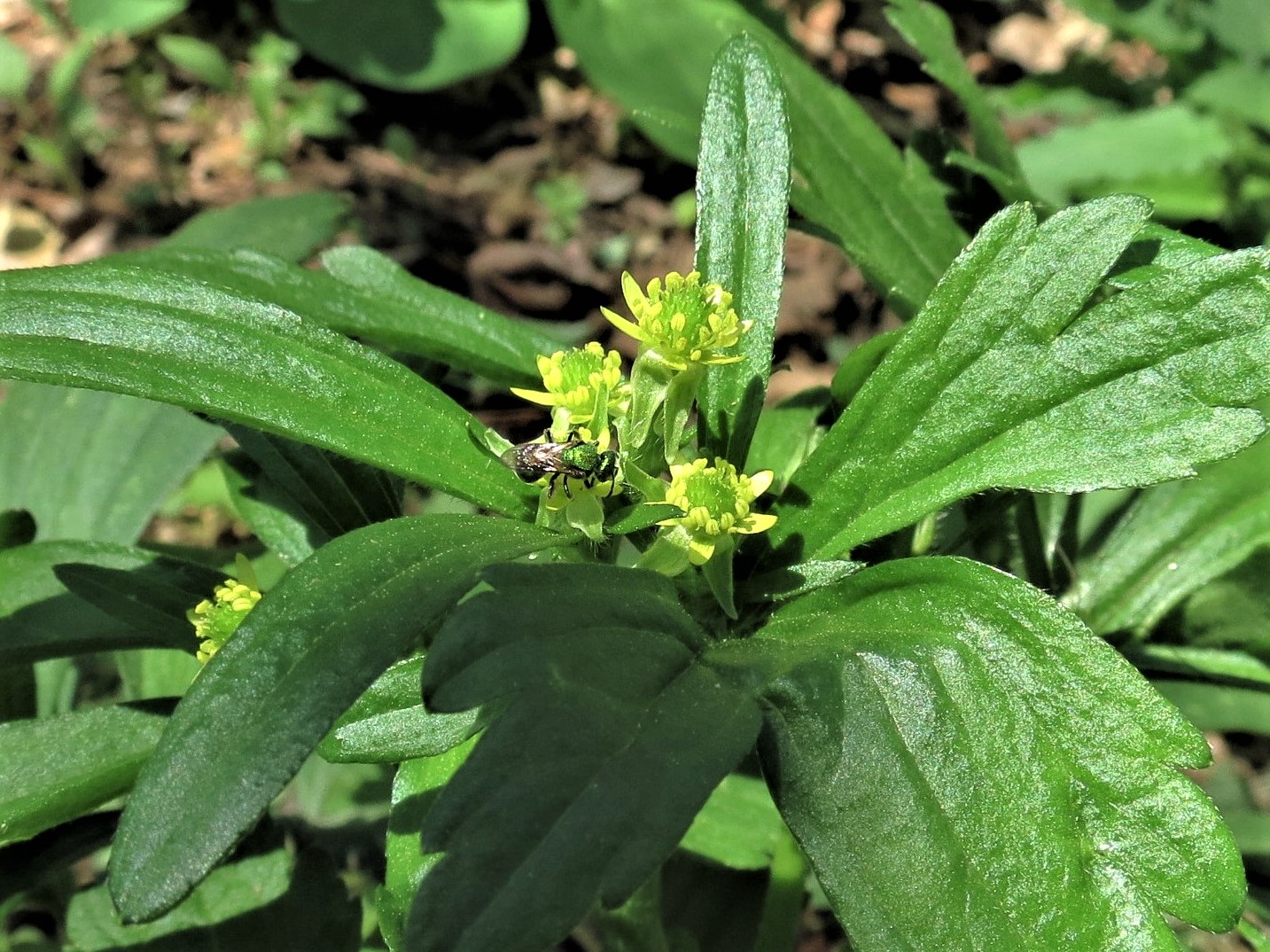

With fertilization and ovary growth, the pistil-bearing receptacles become a fruit-head about ¼ inch long and ⅛ inch wide. The globose heads consist of a dense cluster of ovoid achenes with a slightly thickened center, smooth margins and minutely roughened sides. Achenes have a distinctive beak that projects from along their upper margin downward in alignment with the achene’s principal plane. The flattened beaks taper abruptly to a hooked sharp, non-piercing point. The loosely attached achenes fall off to reveal an elongate receptacle with numerous long, spreading white hairs. Seeds, brown when dry, may be dispersed by passing animals and surface runoff following heavy rain.
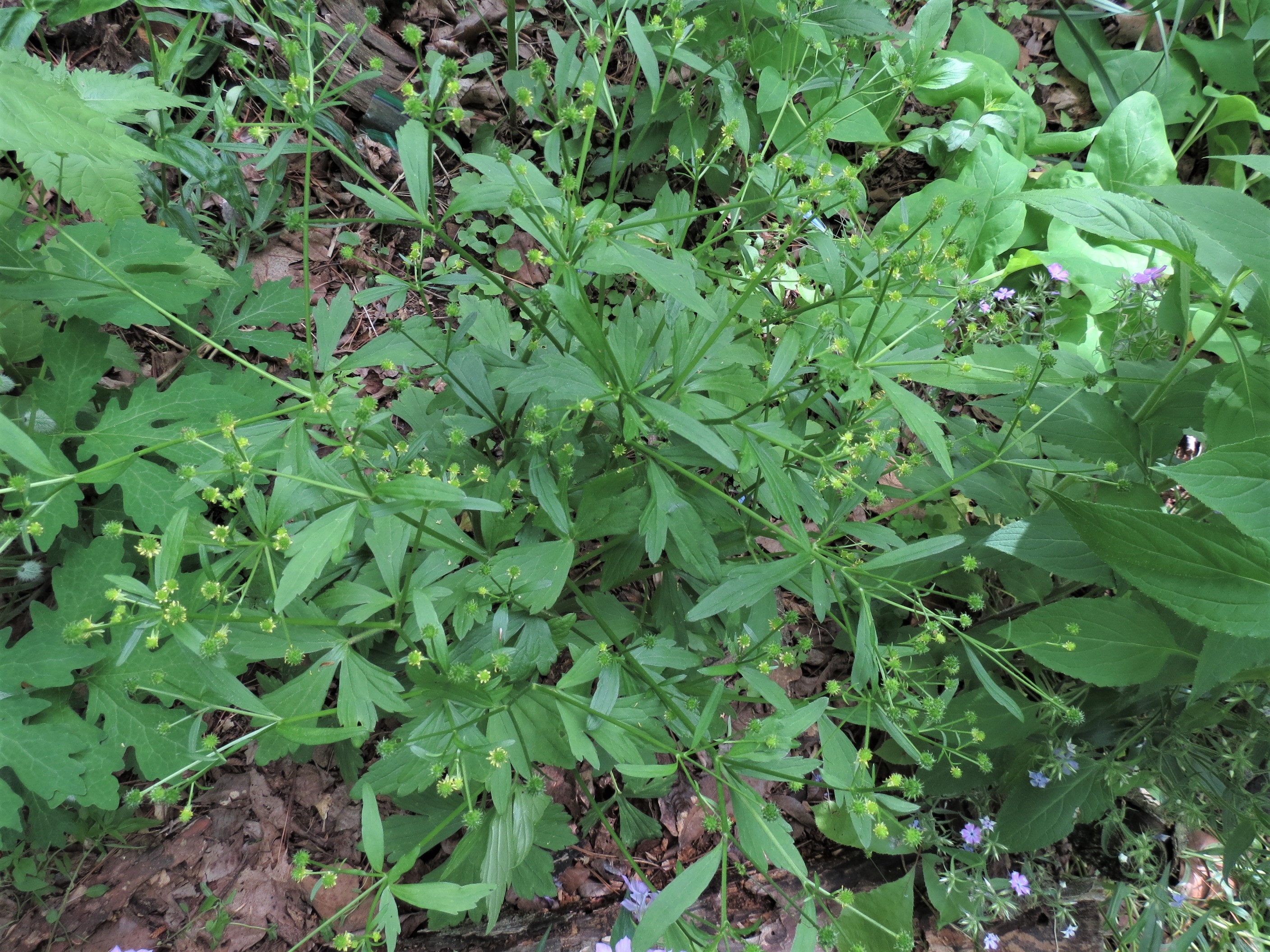
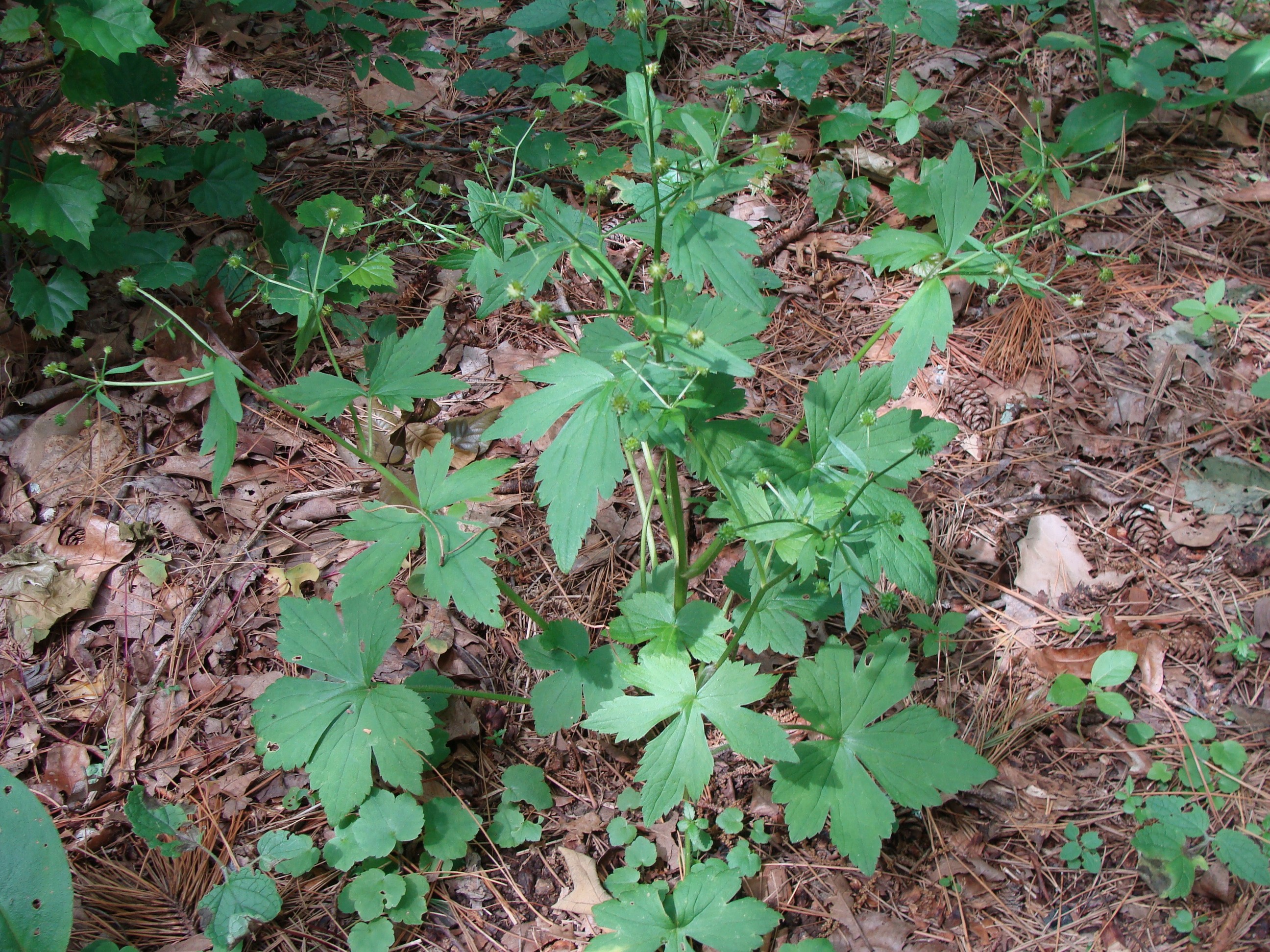
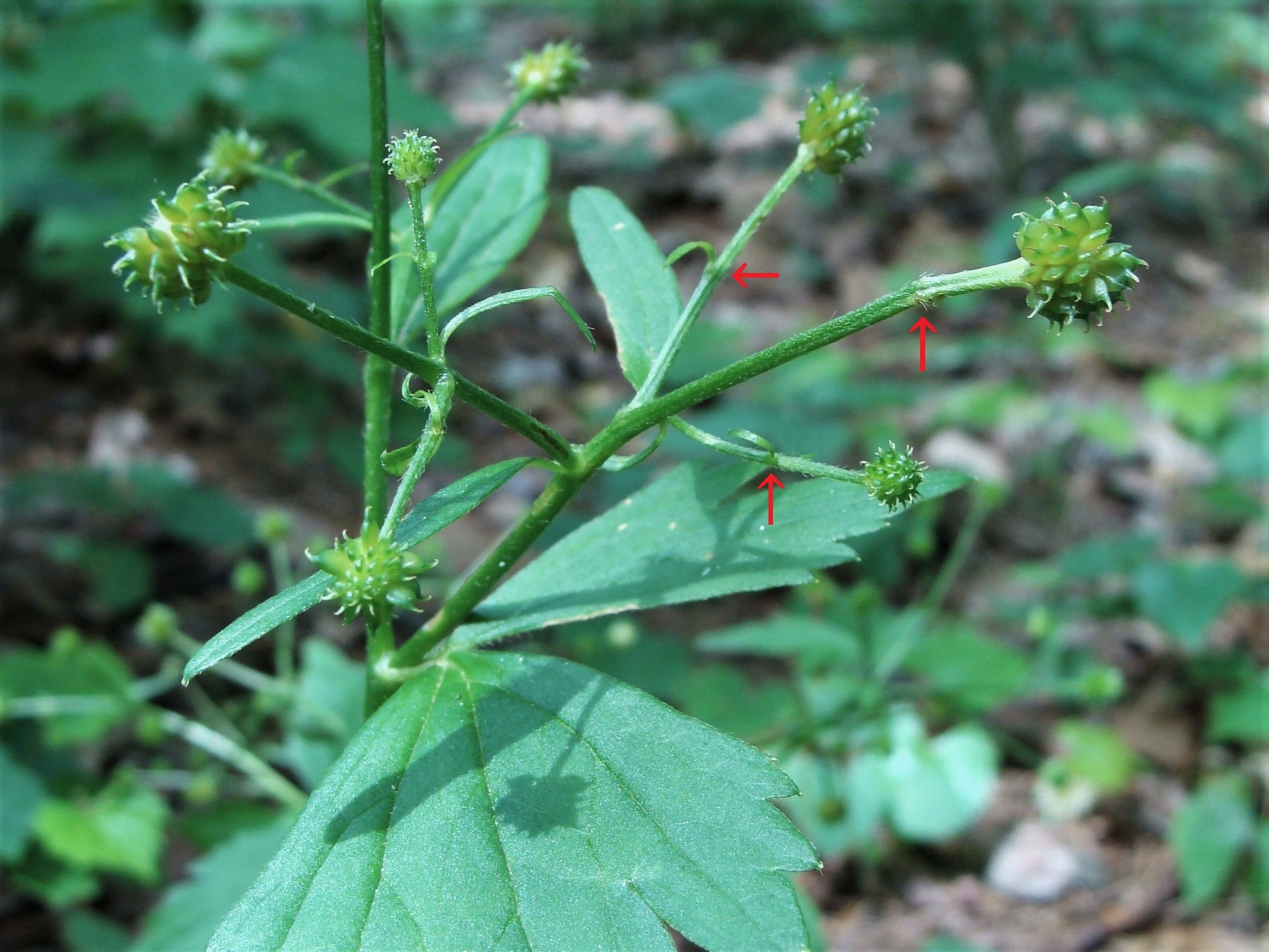
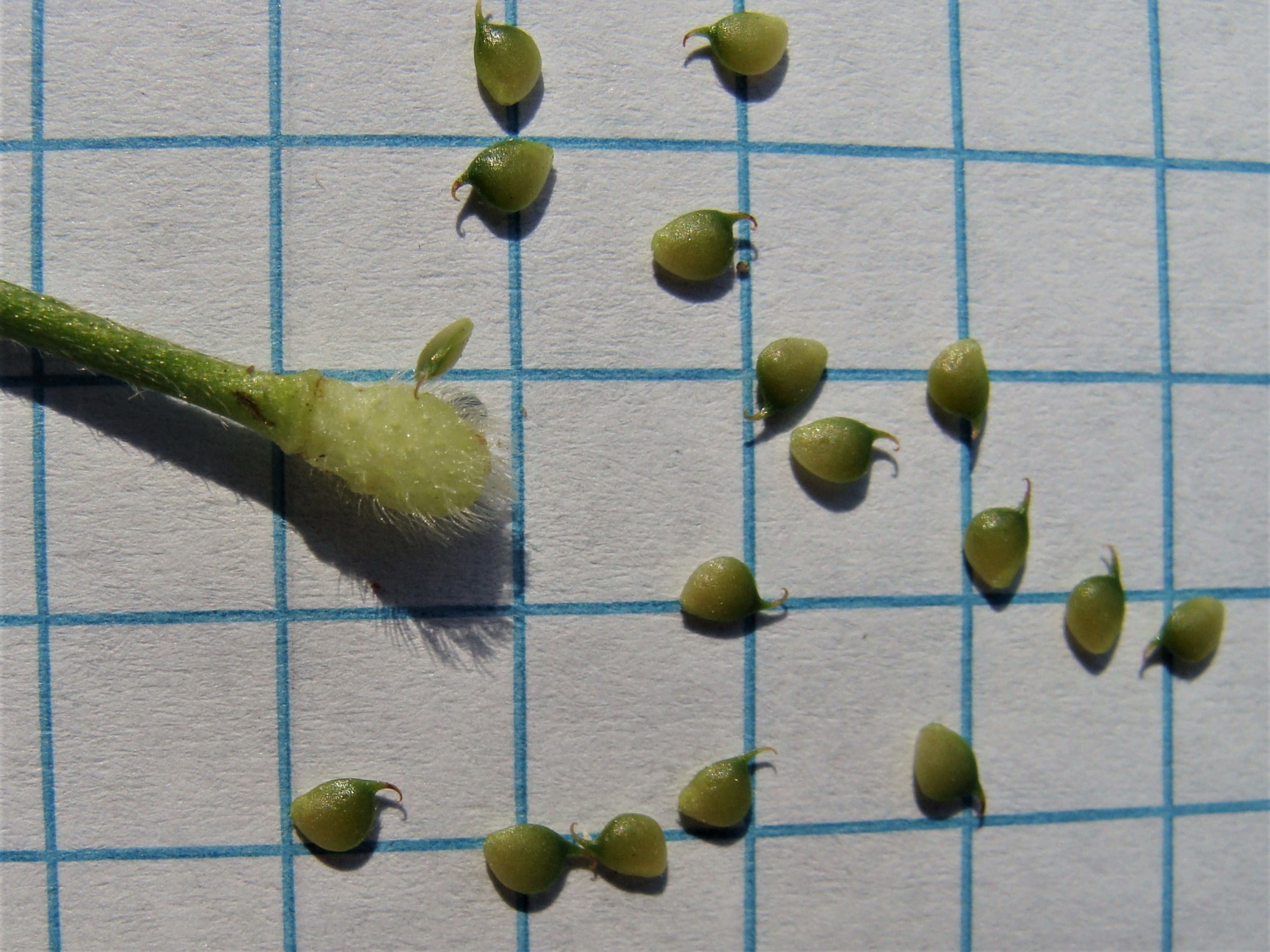
Hooked Buttercup is most showy in spring when plants are most leafy and bearing small flowers. The pale yellow petals and stamens, along with the larger pale-green sepals, drop off cleanly as the shinny-green pistils enlarge into seeds (achenes) with the same shape. By late spring, with maturing seed, plants are nearly leafless and assume a scraggly appearance. Flowers provide nectar and pollen for small bees and seed for game-birds and small mammals. Seed readily germinate, but the species has not been noted to be aggressive, in part, because bare soil is needed for seedlings to survive. Hooked Buttercup is also known as Blisterwort because of an oil (glycoside ranunculin) in its foliage and stems can cause blistering in the mouth area and abdominal pain when ingested by herbivores and humans.
Sixteen other yellow-flowered (sometimes white) buttercups occur in Arkansas of which 2 also have small flowers: Kidney-Leaf Buttercup (R. abortivus) and Rock Buttercup (R. micranthus). Both are also called Small-Flower Buttercup and have distinctive lower oval to ovate to reniform leaves. Hispid Buttercup (R. hispidus var. hispidus) has similar 3-lobed leaves, but the terminal lobe is typically stalked, flowers are significantly larger, and beaks of achenes are nearly straight. Another buttercup addressed in this series of articles is Early Buttercup (R. fascicularis) which has leaves and flowers that are significantly different than Hooked Buttercup and has tuberous roots.
*A second variety of the species (Ranunculus recurvatus var. tropicus) occurs in the Caribbean Islands.
Article and photographs by ANPS member Sid Vogelpohl

